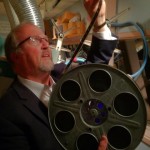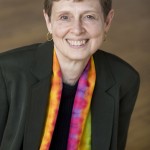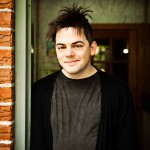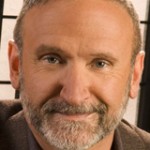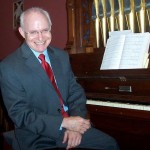The Choir of St. Paul’s | Harvard Square is one of very few traditional choirs of boys and men in the USA. The Choir is supported by the only Roman Catholic Boys Choir School in America, while the professional men are drawn from local music colleges including the Longy School of Music, NEC and Boston Conservatory. As a primarily liturgical Choir, the principal focus of music-making is the Mass, in celebration of which the boys and men sing music from the great history of the Church, in the fine acoustics of St. Paul’s Church Harvard Square. Plainsong, Polyphony, Romantic and Contemporary composition are all represented in our repertoire. The boys sing at daily services, with the result that our boys have a large repertoire of boys-voice music. The Choir is fed by a training choir of 4th and 5th grade boys known as ‘The Trebles,’ they sing three times each week. We also maintain a busy schedule of concerts in Massachusetts, tour nationally and internationally, and record frequently for television and radio. We have collaborated with renowned ensembles such as the Boston Symphony Orchestra.
Category Archives: Uncategorized
Peter Krasinski
Peter Edwin Krasinski currently serves as organist of First Church of Christ, Scientist in Providence and as accompanist at Beth El Temple Center, Belmont, Massachusetts. He is on the faculty of the Boston Archdiocesan Choir School, Cambridge and serves as organ consultant on a number of high-profile projects. He holds both a Bachelor of Music in music education and organ performance and a Master of Sacred Music from Boston University. A winner of the first prize in improvisation in the American Guild of Organists National Competition, he has played in concert at many of the world’s most important organ venues. He has premiered the art of silent film accompaniment at many distinguished venues, including Saint Paul Church, Cambridge; National City Christian Church, Washington, D.C.; Cathedral of St. Joseph, Hartford; Saint Joseph’s Oratory, Montreal; Second Congregational Church, Holyoke; and major halls in Yokohama, Fukui, Miyazaki, and Kanazawa, Japan.
Parent Guardian Permission Form
Error: Contact form not found.
Carol Barnett
“March to Glory” – Organ Solo
Carol Barnett’s MARCH TO GLORY: ”Draw Me Nearer” was inspired by the chorus of that wonderful old hymn by Fanny J. Crosby and William H. Doane. The work progresses from the first faint glimmerings of hope to a full-fledged triumphant procession. The chorus itself is a short musical journey that expresses both longing and jubilation. March to Glory looks at both these emotions, moving from one to the other in a spirited, joyful journey. Carol Barnett’s March to Glory is available through Beady Eyes Publishing.
Carol Barnett’s music has been called audacious and engaging. Her varied catalog includes works for solo voice, piano, chorus, diverse chamber ensembles, orchestra, and wind ensemble. She was awarded the 2003 Nancy Van de Vate International Prize for Opera for her chamber opera, Snow, and Meeting at Seneca Falls was featured at the 2006 Diversity Festival in Red Wing, MN. Other recent works include The World Beloved: A Bluegrass Mass for VocalEssence and Monroe Crossing, Song of Perfect Propriety for the Cornell University Women’s Chorus, Prelude and Romp for the Medalist Concert Band, and Praise, for organ and steel drum.
A longtime presence on the Minnesota music scene, Barnett is a charter member of the American Composers Forum and a graduate of the University of Minnesota, where she studied composition with Dominick Argento and Paul Fetler. She was composer-in-residence with the Dale Warland Singers from 1992 to 2001, and currently teaches at Augsburg College in Minneapolis.
Nico Muhly
Patterns – Organ Solo
Nico Muhly’s Patterns is composed in four sections, each of which is sort of a rhythmic étude. The first (“Move Along”) is a perpetual motion machine with staggered and angular rhythms thrown between the pedals and the left hand. The second movement (“Palindromes”) is calmer and centered around an idée fixe in the left hand while the right hand interjects and ornaments. The pedals, here, are a clumsy cousin, constantly upturning the sense of rhythmic stability. The third movement (“Similar”) is all to do with ways to divide up the bar: seven, eight, six, five, four — it’s all there. Then the finale is a perpetual motion machine on its highest setting — manic and hyper, with hiccoughs offsetting the regularity of some of the rhythms. Patterns is available through St. Rose Music.
Nico Muhly has composed a wide scope of work for ensembles, soloists and organizations including the American Symphony Orchestra, Boston Pops, Carnegie Hall, Chicago Symphony, countertenor Iestyn Davies, violinist Hilary Hahn, choreographer Benjamin Millepied, New York City Ballet, New York Philharmonic, Paris Opéra Ballet, soprano Jessica Rivera, and designer/illustrator Maira Kalman.
Among Muhly’s most frequent collaborators are his colleagues at Bedroom Community, an artist-run label headed by Icelandic musician Valgeir Sigurðsson. Bedroom Community was inaugurated in 2007 with the release of Muhly’s first album, Speaks Volumes. In spring 2012, Bedroom Community released Muhly’s three-part Drones & Music, in collaboration with pianist Bruce Brubaker, violinist Pekka Kuusisto, and violist Nadia Sirota
Born in Vermont in 1981 and raised in Providence, Rhode Island, Muhly graduated from Columbia University with a degree in English Literature. In 2004, he received a Masters in Music from the Juilliard School, where he studied under Christopher Rouse and John Corigliano.
His writings and full schedule can be found at www.nicomuhly.com.
Carson Cooman
“Solstice Sonata” – Trumpet and Organ
Carson Cooman’s Solstice Sonata is scored for trumpet and organ. “At the solstice (summer in the Northern Hemisphere and winter in the Southern), the sun is directly aligned with the tropical latitude lines, and the longest day of the year occurs (marking the start of summer). This sonata is music of celebration and contemplation, taking the inspiration of the longest day as a starting place for meditation both thoughtful and joyous. “Take Flight” soars and leaps with vigor – perhaps the image of a hang-glider’s journey over a dramatic landscape under the late evening sun. “The Dream of Peace” is lyrical and passionate: it is perhaps night music of reflection and intensity. “Glittering, Aglow” begins with quiet, mystical music: a gradual awakening. A vibrant, syncopated dance breaks out, is interrupted by the quiet music again, and returns to push forward to a vibrant conclusion. The new season has begun. ” Solstice Sonata is published by Zimbel Press.
Carson Cooman (b. 1982) is an American composer with a catalog of hundreds of works in many forms—from solo instrumental pieces to operas, and from orchestral works to hymn tunes. His music has been performed on all six inhabited continents in venues that range from the stage of Carnegie Hall to the basket of a hot air balloon. Cooman’s work appears on over forty recordings, including twenty complete CDs. Cooman’s primary composition studies were with Bernard Rands, Judith Weir, Alan Fletcher, and James Willey. As an active concert organist, over 130 new works have been composed for him by composers from around the world, and his organ performances can be heard on a number of CD recordings. He serves as an active consultant on music business matters to composers and performing organizations,specializing particularly in the area of composer estates and archives. For more information, visit www.carsoncooman.com.
James Woodman
Eight Little Harmonies and Counterpoints – Organ Solo
James Woodman’s Eight Little Harmonies and Counterpoints is intended for pedagogical use.
The “Eight Little Preludes and Fugues” (BWV 553–560) are among the first works almost all young organists encounter early in their training. They are justifiably popular with both students and teachers: modest in technical difficulty, transparent in formal organization, full of life and drama, and just plain fun to play. I admire them as a composer, but for some years I had been pondering what a more contemporary set might consist of.
The overall organization of my collection is the same as its model: eight paired works (the first of each pair built on harmonic ideas, the second on contrapuntal); modest in duration and technical demand (each pair about 4’15”, pedal difficulty ranging from very easy to moderately challenging); and perhaps rather surprisingly, complete absence of any dynamics or registration. This is because I believe the notational spareness of the first set is a real gift to both the young organist and the teacher. It is never too soon to begin the development of ear and taste in matters of registration. In the case of my own collection, experimentation isn’t just healthy, it’s essential. Try a piece on 8’ and 4’, then on a full principal chorus. Which suits the work better? Or do they both work? How does registration affect touch? Do those gradually built-up tone clusters sound better on the voix celeste or a krummhorn? I cherish the invitation to creativity that the openness of an organ score by Bach or Frescobaldi gives; I hope others will find the same opportunity in this score. “ (From the composer’s note) Eight Little Harmonies and Counterpoints is available from Thorpe Music.
James Woodman was born in Portland, Maine, and educated at Phillips Exeter Academy, Princeton University, and the New England Conservatory. He was appointed the first composer-in-residence at the Cathedral Church of St. Paul, Boston, and currently serves as monastery organist for the Society of St. John the Evangelist in Cambridge. He is frequently sought as a composer of organ and choral works; recent commissions include works for The Memorial Church at Harvard University, concert organist Peter Sykes, and the tricentennial celebrations of Green’s Farms Congregational Church, Westport, Connecticut. His compositions have been widely programmed; his work has been performed at Magdalen College, Oxford; La Trinité, Paris; Festival Internationale de l’Orgue Ancien, Sion, Switzerland; Domkirche, Berlin; Minato Mirae Concert Hall, Yokohama; and St. Thomas Episcopal Church, New York; and on National Public Radio’s Pipedreams and on recordings by Peter Sykes, Nancy Granert, Mark Brombaugh, and the Boston Boy Choir.
Edward Thompson
Prayers of Hildegard – SATB chorus and Marimba
Edward Thompson’s Prayers of Hildegard for chorus and marimba is in three movements. 1. There is the Music of Heaven 2. It is the Heart that Sees and 3. O Holy Spirit. “The main musical source for many of Hildegard’s compositions is the Symphonie armonie celestium revelationum. Hildegard wrote both the words and the music for these pieces and in this respect, they differ from Gregorian chant. I have chosen, from various sources, three texts that underline Hildegard’s outlook on the oneness of creation. I chose the marimba because it offers a unique color. The combination of the marimba with voices means that the voices present the linearity of the music while the percussion provides more of a verticality or rhythmic impetus…..Sometimes the marimba plays a single line that has a lute-like quality. At other times it plays four-part chords. Sometimes it functions as a soloist and sometimes as an accompanist.”
Edward Thompson, D.M.A., has been at the Unitarian Church in Westport, Connecticut since 1978. He holds a master’s degree from The Juilliard School and a doctorate from the University of Hartford. He is a past dean of the Fairfield West chapter of the American Guild of Organists and has concertized throughout the United States and Europe. In addition, he teaches privately, coaches, composes, and accompanies throughout the area. He is an active member of the Unitarian Universalist Musician’s Network.
Leo Abbott
Leo Abbott is a graduate of the Boston Archdiocesan Choir School, Cambridge, and the Chaloff School of Music, Boston. His teachers include Theodore Marier, George Faxon, Clarence Watters, and Flor Peeters in organ; Naji Hakim in improvisation; and Julius Chaloff in piano. He holds the Fellowship and Choirmaster certificates of the American Guild of Organists (AGO), has won first prize in several international and national competitions, and was a finalist at the Grand Prix de Chartres in 1984. In 1986, he was appointed music director and organist of the Cathedral of the Holy Cross, Boston. He has performed throughout the United States and in France, Belgium, and Ireland, and for conventions of the AGO and the Organ Historical Society. He is an active member of the AGO, the Organ Historical Society, and the Conference of Roman Catholic Cathedral Musician. In 2010, he performed at Notre-Dame and Saint-Sulpice, Paris.
Sam Ou
A Rosemary Scales Prize winner for best cello concerto performance at the Kingsville International Young Performers Competition, cellist Sam Ou has performed at prestigious summer festivals including those at Tanglewood, Sarasota, Musicorda, Santa Fe, and La Jolla. He completed his Bachelor of Arts and Master of Music at Columbia University and The Juilliard School in the schools’ double-degree program, and later received a Doctorate of Musical Arts from New England Conservatory (NEC) in Boston. He was praised by The Boston Globe for his “impassioned performance” of Liszt’s Romance oubliée at NEC’s Jordan Hall. He has been a visiting lecturer and cello teacher at Fu-Jen Catholic University in Taipei, Taiwan, and currently teaches at the NEC Preparatory School. A frequent collaborator with organist Harry Lyn Huff, Mr. Ou and Mr. Huff recently released the CD With String and Pipe, recorded in the sanctuary of Old South Church.

